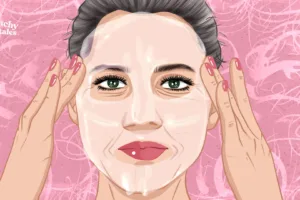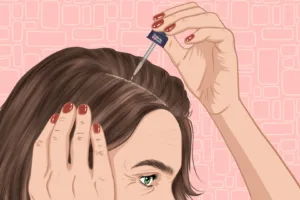Beyond the Scale: How to Care for Your Breasts After a Weight Loss Journey
Weight loss is a great accomplishment, especially after 50, when maintaining a healthy weight can feel like a full-time job. However, with the triumph of shedding those extra pounds often comes an unwelcome side effect: sagging breasts. This is a common concern, particularly for midlife women, as the skin loses elasticity and gravity takes its toll.
But don’t worry—there are ways to manage and even improve the appearance of sagging breasts post-weight loss. Here’s a guide to understanding the changes your body is going through and actionable tips to help you embrace your new shape (and your new bikini) with confidence.
Understanding the Causes Of Breast Sagging
Breast sagging, or ptosis, is a natural part of aging. As women age, the connective tissue in the breasts, known as Cooper’s ligaments, weakens. This, combined with the loss of skin elasticity, leads to breasts that droop or sag. Weight loss exacerbates this issue because the breasts are composed largely of fat. When you lose weight, some of that fat disappears from the breasts, often leaving them with less volume and more loose skin.
According to a study published in Plastic and Reconstructive Surgery in 2020, women who experience significant weight loss (defined as a loss of 20% or more of their body weight) are particularly susceptible to sagging due to the rapid loss of fatty tissue from the breasts, which can happen more quickly than the skin can adapt.
Dr. Jennifer Walden, a board-certified plastic surgeon, notes, “Skin elasticity decreases with age, so the effects of weight loss on breast tissue are more pronounced in women over 50. This doesn’t mean you can’t do anything about it, though.“
Can you prevent breast sagging while losing weight?
Unfortunately, there’s no guaranteed method to prevent breast changes during weight loss. While the prospect of sagging breasts can be disheartening, there are steps you can take to minimize their impact.
Supplements like collagen and vitamin-rich products might offer some benefits for skin elasticity, which could indirectly affect breast appearance. Incorporating firming creams with ingredients like retinoids, hyaluronic acid, and vitamin C can improve the area. While these won’t dramatically lift sagging breasts, they can enhance skin texture and provide a more toned appearance. Regular moisturizing and massage can also boost circulation and promote collagen production.
Hydration also plays a crucial role in overall skin health, including the delicate area of the chest. While water won’t miraculously lift your breasts, it contributes to skin tone and suppleness. Don’t forget that excessive sun exposure can contribute to wrinkles and dryness, too. So shielding your decolletage can be beneficial before, during and after any diet.
6 Tips for Managing Sagging Breasts
Fully restoring the original size and shape of your breasts can be difficult without surgery, but you can certainly take certain measures to improve the lift and strength of your bust.
1) Invest in a Good Supportive Bra
One of the simplest and most effective ways to manage sagging breasts is by wearing a well-fitted, supportive bra. Bras that offer full coverage with wide straps and a strong underwire can help lift and support the breasts, providing a more youthful silhouette. A professional bra fitting can make a significant difference, as wearing the wrong size can exacerbate the appearance of sagging.
2) Incorporate Strength Training
While you can’t exercise the breast tissue itself, strengthening the muscles underneath the breasts—such as the pectorals—can provide better support and improve the overall appearance of your chest. Exercises like push-ups, chest presses, and dumbbell flies are particularly effective. A 2021 study from the Journal of Aging and Physical Activity found that women over 50 who engaged in regular resistance training saw improvements in muscle tone and body composition, which contributed to a more lifted appearance.
3) Maintain a Stable Weight
Frequent fluctuations in weight can cause your skin to stretch and sag even more. Gradual weight loss, around 1 to 2 pounds per week, allows your body to adjust more naturally, potentially minimizing skin laxity. After achieving your weight loss goals, aim to maintain a stable weight to prevent further stretching of the breast skin with a balanced diet rich in antioxidants, vitamins, healthy fats, and protein that supports skin health and elasticity.
4) Explore Non-Surgical Treatments
For those looking for more noticeable results, non-surgical treatments like laser therapy and radiofrequency skin tightening can help. These procedures work by stimulating collagen production, which can improve skin elasticity and lift sagging tissue. According to a 2022 review in the Journal of Cosmetic Dermatology, these treatments are increasingly popular among women over 50, offering a non-invasive option to address skin laxity without the downtime associated with surgery.
5) Maintain a correct posture
It not only looks good but also takes unnecessary stress off the joints and tissues that can contribute to the sagging of breasts. Correct posture distributes weight evenly, which will also help to prevent other chest and back pains.
6) Surgical Options
If sagging is severe and impacting your confidence, surgical options like a breast lift (mastopexy) might be worth considering. This procedure removes excess skin and tightens the surrounding tissue to create a more lifted appearance. However, having realistic expectations and consulting with a board-certified plastic surgeon to discuss the risks and benefits is essential.
Embracing Your Body
It’s important to remember that some degree of sagging is natural and entirely normal, especially as we age. The goal is not to chase an unattainable standard of youth but to feel comfortable and confident in your own skin. Ultimately, the most important thing is to celebrate your body and all it has achieved. The key is to focus on how you feel rather than how you look.
Like this post? Support Us or Sign up to our newsletter to get more articles like this delivered straight to your inbox!






This Post Has 0 Comments